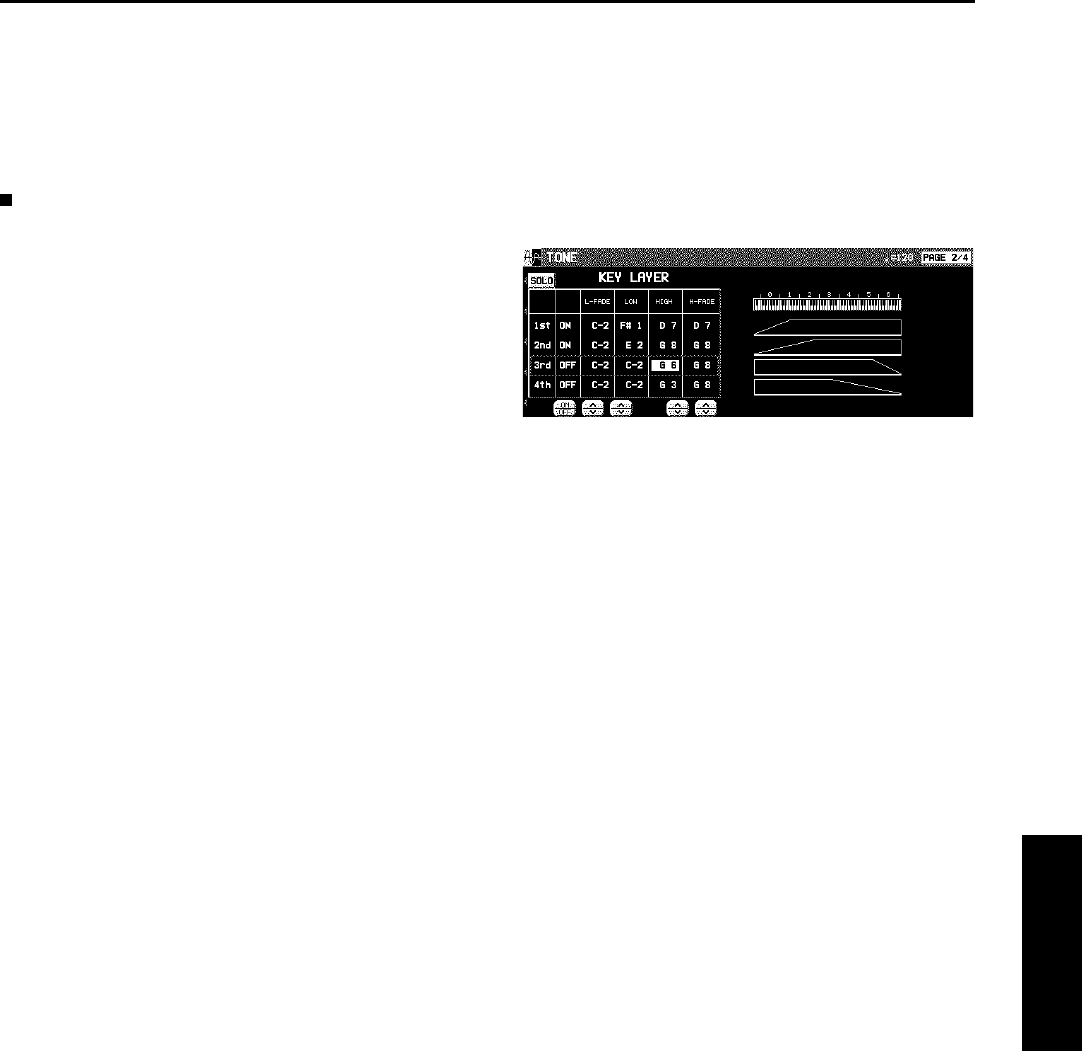
CHORD:
The sound is emphasized when chords are
played (like the cutting sound of a guitar, for
example).
TONE COPY
You can copy the tone of a particular sound to
a specified tone in the sound you are editing.
1. On the 1/4 display, press the TONE COPY
button.
2. Use the FROM ∧ and ∨ buttons to select the
tone to copy from.
• Use the OPTION ∧ and ∨ buttons to select
the item you wish to copy.
3. Use the TO ∧ and ∨ buttons to select the tone
you wish to copy to.
4. Press the OK button.
• Tone copy is executed.
KEY LAYER
Adjust the relation of tone output to keyboard lo-
cation.
1. Use the PAGE buttons to view the 2/4 display.
• The display looks similar to the following.
2. Use the buttons to the left of the display to
select a tone (1st, 2nd, 3rd or 4th).
3. Use the L-FADE ∧ and ∨ buttons and the LOW
∧ and ∨ buttons to define the area of the lower
range of tone output.
• By entering different values for the L-FADE
and LOW settings, you can define a sloping
volume increase to the peak output volume
which corresponds to the note pitch.
4. Use the HIGH ∧ and ∨ buttons and the H-
FADE ∧ and ∨ buttons to define the area of
the higher range of tone output.
• By entering different values for the H-FADE
and HIGH settings, you can define a sloping
volume decrease from the peak output which
corresponds to the note pitch.
• By overlapping the L-FADE and H-FADE
curves of each different tone, you can achieve
a cross-fade effect, where the sound gradually
changes in relation to pitch.
5. Repeat steps 2 to 4 for the other tones, as
desired.
Sound Edit
Part X Sound Edit
167
QQTG0671
